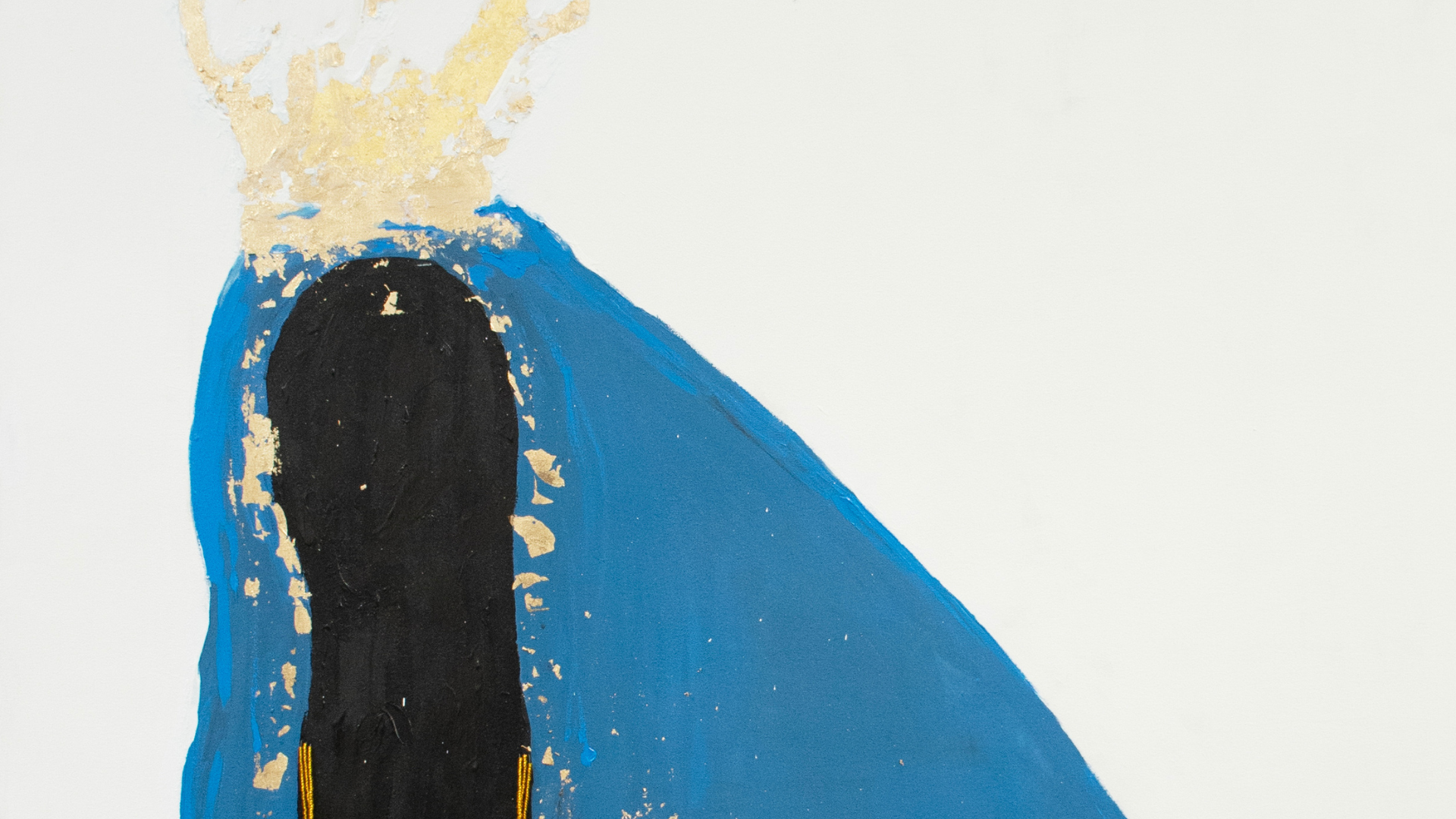Aline Bispo
24 August to
18 October 2024
Luis Maluf Galeria
Rua Brigadeiro Galvão, 996
Barra Funda, São Paulo, SP
Somatória de Forças [Summation of Forces]
It’s pure coincidence that Aline and I, both from São Paulo of Bahian descent, have the same surname. We and so many other ‘Bispos’ are probably descended from a certain Antônio Nicanor de Alcântara Bispo, who was, at the end of the 19th century, the 2nd secretary of the Sociedade Beneficente União Filantrópica dos Artistas, founded in Salvador in 1889. Beyond this distant kinship, we are also linked by a common interest in the forces of Afro-Brazilian sacredness.
Aline, who has been working on this theme in her work for almost a decade, follows the trail blazed by artists who came before her, and stands alongside her contemporaries in researching the experience of the sacred in Afro-Brazilian art. Just to name a few, among many others, artists: Arthur Bispo do Rosário, Mestre Didi, Heitor dos Prazeres, Ronaldo Rêgo, Djanira da Motta e Silva, José Adário, Moisés Patrício, Eneida Sanches, Raquel Cambinda, Antônio Obá, Sheyla Ayó, Nádia Taquari, Rodrigo Bueno, Maria Auxiliadora, Niobe Xandó, Carybé, Terciliano Júnior, Chico Tabibuia, Ana Pi, Renata Felinto, Silvana Mendes, Antonio Pulquerio, Denise Camargo. This number of names shows that Aline Bispo is not alone in this artistic circuit that draws its poetic strength from the sacred.
In the solo exhibition Somatória de forças, the artist, whose paintings can be seen on the gables of buildings in the vicinity of Luis Maluf (Barra Funda), presents works produced over the last five years, some of them new, made under the inspiration of contact with more or less well-known festivals in the Afro-Brazilian calendar: Bará do Mercado, Festa de Nossa Senhora da Boa Morte, 02 de Fevereiro, Nossa Senhora Aparecida, Feira de Baiano, etc.
A série Orixás, encantados, santos e voduns, de 2023, como o próprio nome assinala, aproxima em um único gesto poético a estética complexa inerente às religiões afro-brasileiras que, resultantes da diáspora, misturam referências sagradas em um jogo de revela-esconde. Assim, onde se vê a forma de um santo católico, em sua versão revestido de tecido estampado, vê-se também uma divindade africana, seja porque um fio de contas colorido está ali como um lembrete ou porque o nome da obra indica tratar-se de deuses africanos e afro-brasileiros.
Among the paintings, the brushstrokes, sometimes smooth and sometimes expressive, take up sacred icons such as Iemanjá, Santo Antônio, São Benedito, the women of Boa Morte and a Babá (father in Yoruba). Saint Anthony, still syncretised on the African continent with Exú, is positioned near the entrance to the gallery. Covered in black fabric, under his feet are jars of coins and strips of satin suggesting the multiplication of paths.
The palette used by the artist is spread throughout the exhibition: blue, white, black and red. Although these colours are widely known by their European names, in the Angolan Candomblé and Jeje Nagô traditions they are given their own ritual names. Thus, in the first tradition, white is luvemba, red tukule or tukula, black kala; in the second, blue is waji, red osun and white efun. How much plastic beauty emerges from the juxtaposition of these colours!
It is blue that organises the photographic composition of Asunción, from 2019. In this series, Aline offers three identical versions of Our Lady of Aparecida, but with different models. Kicked off national television in 1995, here and in other parts of the exhibition the patron saint of Brazil is materialised in young women. This is a state of multiplied spiritual ascension. Their hands hold the same crucifix of pearl and metal acorns. Another incarnation of the patron saint are the plaster representations produced by the sacred industry, modified, however, by covering them in coloured fabrics.
The exhibition features two flags printed with the image of the twins Cosme and Damião, also known by the Nagô term Ibeji. Aline also explores the shape of an altar, inspired by the relationship of opposition and complementarity between familiar spirits – rada – or aggressive spirits – petro, present in the Haitian Vodou religion. This reference to Voodoo gives the exhibition environment a sense of transition between zones of light and shadow.
With a mixture of sacred references as an abundant ingredient in her poetics, Aline Bispo pursues a path in which she recognises the value of syncretism in Brazilian culture, understanding that despite its negative aspects, in the sense that historically it has led to the concealment of cultural practices of African origins, it has also generated unprecedented strengths.
In 2024, studies on Afro-Brazilian art, the landmark of which is Nina Rodrigues’ text, As bellas artes dos colonos pretos – a esculptura, from 1904, will be 120 years old. At this time, initiatives such as the Somatória de forças exhibition broaden and strengthen knowledge about the multifaceted history of plastic expressions of faith in the country, which continues to inspire the field of visual arts.
We would like to thank Luis Maluf and his team for their support and partnership in building this exhibition.
— Alexandre Araujo Bispo
